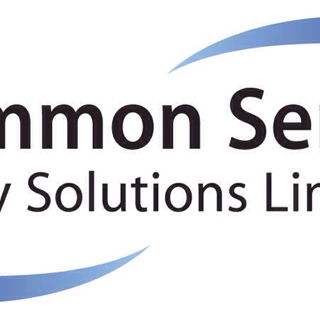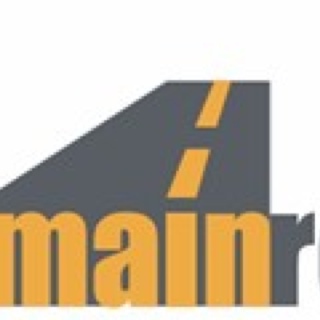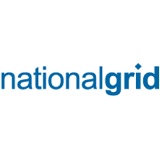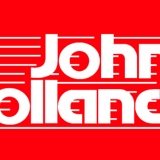Information
-
Audit Title
-
Region
-
Document No.
-
Occupant Name
-
Client Name
-
Works Location
-
Conducted on
-
Submission Date/time
-
Audited by
-
Manager
- Andy Dodds
- Mark Roberts
- Paul Halt
- Terry Gregory
- Colin Jones
- Roy Gordon
-
Operatives
-
Type Type of Works Being Conducted - Select
- Cavity Wall Insulation
- Heating Installation
- Cladding
- Solar Paneling
- Loft Insulation
- Construction
-
Description of Works
Customer Relations
-
Customer appointments should be provided for all measures.
Client communication is key to great customer service and helps manage customer expectations. This forms part of the Tempo Way. -
Was a customer appointment confirmed with client prior to arrival
-
Was a customer safety brief given
-
Has the customer signed the briefing sheet
Property Protection
-
Caring for the client property is extremely important. Appropriate protection from works is imperative. This may include dust sheets, window and cill protection for external wall insulation.
-
Have all appropriate measures been put in place to protect client property?
Risk Assessment
-
Prior to any works being conducted a Risk Assessment must be conducted. This is the first thing to be conducted upon arrival on site.
Ensure any peculiarities are considered such as Confined Space, Old Persons\Disabilities, Dangerous Animals, Children, Drugs/Needles etc. -
Has a Point of Works Risk Assessment been conducted?
-
Have all foreseeable, site specific risks been considered?
-
Is the Site Safety Manual in place and in good condition?
-
Is the site compliant regarding Risk Assessment?
Asbestos
-
Has an Asbestos Survey been conducted by the assessor?
-
Has any Asbestos Risk been taken into consideration on the Point of Works RA?
-
Has the client been asked as to whether they are aware of any asbestos in the property
-
Have appropriate controls been put in place?
Internal Access and Egress (within the confines of the property and gardens).
-
A safe means of access and egress must be maintained at all times for clients, operatives and other members of the public where appropriate.
Walkways, Stairs, Footpaths etc. are to be kept clear of obstacles, work tools, materials and vehicles where appropriate. -
Is there safe access and egress to all working areas of the site?
-
Are walkways free from obstructions and stored materials?
-
Has all appropriate signage been deployed inside and outside the property?
-
Access and Egress compliant?
Access - External
-
Is all signage in accordance with Chapter 8 of the New Roads & Street works Manual.
-
Are the vehicles safely parked without causing problems for other road users,emergency services or members of the public?
-
Ensure all public access routes are kept clean and clear at all times.
-
Ensure adequate signage is provided to direct members of the public.
-
External Access Compliant?
Confined Spaces
-
Confined Spaces include manholes, shafts, pits/tanks, pipes/culverts, certain excavations, silo's and other confined/enclosed spaces.
-
Is there a risk assessment for the confined spaces work?
-
Are all operatives trained in confined space entry
-
Are appropriate controls in place to include atmospheric monitoring, emergency escape arrangements, adequate supervision (i.e.: a top man outside of the confined space), method of raising the alarm and safe access/egress etc.
-
Is a permit to work system in place?
-
Confined Spaces compliant?
Control of Substances Hazardous to Health (COSHH)
-
Have COSSH Assessments been carried out for all potentially hazardous materials and substances being used on the site.
-
Are Material Safety Data Sheets available to assist with COSHH assessments.
-
Have the appropriate control systems and PPE been provided and is the PPE being used.
-
COSHH Compliant?
Electrical Equipment
-
All electrical equipment must be RCD Protected for all trades. Plumbers/Heating Engineers must have a Volt Stick and Socket & See system in place.
PAT Testing must be carried out at least every 6 months with appropriate labels displayed to indicate this.
There should also be a register of electrical equipment on the van which indicates the serial number of equipment and last PAT Test date. -
Is a voltage stick in place and working appropriately?
-
Is a Socket & See set in place? (heating teams only)
-
Are all Portable Electrical Appliances PAT Tested within the last 3 months and in good condition (both 110v and 240v)?
-
Are all 110v & 240v electrical appliances plugged in individually via RCD's in the property?
-
Are cables and leads in good condition and free from damage? (20% Check)
-
Electrical Equipment compliant?
Testing and Calibration
-
Due to the potential high risk nature of the works conducted it is essential that equipment is calibrated and tested where appropriate, with documented records of such inspections for each item of equipment.
-
Have all electrical testers been calibrated within the last 3 months?<br>
-
Has the Flu Gas Analyser (gas telegans) been calibrated within 12 months?
First Aid
-
All teams should have in place an appropriate, well stocked First Aid Kit which is immediately available and appropriately stored.
-
Is anyone on site First Aid Trained?
-
Is the First Aid Box clearly marked and easily accessable?
-
Is the first aid box well stocked?
-
Is Eye Wash available and in date?
-
First Aid requirements compliant?
Housekeeping
-
Are materials stored in an appropriate manner so as not to cause damage to or create slip/trip hazards?
-
Is the general housekeeping on the site good?
-
Housekeeping compliant?
Safe Use of Ladders
-
All ladders must be inspected every 3 months and labeled with the appropriate sticker. Any damaged equipment must be returned to the depot and replaced or repaired.
Things to be inspected include Feet, Rungs, Treads etc. -
Are operatives trained in the use ladders and SSOW i.e. TETRA?
-
Are operatives using the TETRA equipment appropriately?
-
What level of TETRA is in use?
- Level 1
- Level 2
- Level 3
-
Are ladders in good condition?
-
Have ladders been inspected within the last 3 months with appropriate labels indicating this?
-
Ladder access compliant?
Harness Use & Inspection
-
Where roof works are being conducted and/or leaning ladders are being utilised appropriate harness systems must be used.
-
Have harnesses been inspected within the last 12 months and is this appropriately labeled?
-
Are all harnesses within the working life limit of 5 years?
-
Have all operatives received harness training?
-
Are all operatives using the harnesses where appropriate?
-
Harness Safety compliant?
Mobile Scaffold Towers
-
Have Mobile Tower Scaffolds been erected by a competent person and are they being used in accordance with the suppliers instructions?
-
Have the wheels of any tower scaffold been locked when in use and is the platform empty when being moved?
-
Are they tagged safe for use?
-
Mobile Towers compliant?
Scaffolding/Working platforms
-
All scaffold must be inspected every 7 days and following any bad weather conditions which may effect the structure.
Latest inspections must be indicated on a Scaff-Tag or confirming inspection by contacting office in charge of scaffold structure. -
Has the scaffold erection, alteration or dismantling been carried out by a competent person.
-
Has the scaffold been inspected in the last 7 days by a competent person?
-
What was the date of the last scaffold inspection
-
Are double guard rails, toe boards and other suitable edge protection measures in place?
-
Are working platforms fully boarded and are the boards arranged to avoid tipping or tripping - i.e.: no overlapping boards?
-
Is access to all working platforms appropriate?
-
Do all ladder access points have self closing gates fitted?
-
Is there effective warning notices in place to stop any person using an incomplete scaffold?
-
Is the scaffold fit for purpose?
Fire & Hot Works
-
Fire - All appropriate fire prevention measures must be in place
Hot Works - Hot Works include soldering, grinding, or anything else which creates heat, flame, sparks etc.
Every van must carry a fire extinguisher which has been inspected within the last 12 months.
Where hot works is being conducted the operative must have a fire extinguisher at arms length. -
Are all fire extinguisher appropriately deployed in the property?
-
Is there a Fire Extinguisher deployed close to the generator?
-
Has the fire extinguisher been inspected in the last 12 months?
-
Is the extinguisher appropriate for the type of fire hazard?
-
Are other suitable and sufficient fire prevention measures are in place, including the removal of all combustible materials?
-
Permits compliant?
Personal Protective Equipment (PPE)
-
All appropriate PPE must be worn for protection including, but not limited to: Hard Hat, Ear Defenders, Safety Glasses/Goggles, Gloves, Knee Pads, High Vis Clothing etc.
-
Is appropriate PPE being worn by by all operatives?
-
Is all PPE in good condition?
-
Is all PPE being appropriately stored/protected?
-
Has Face Fit Testing been conducted?
-
PPE requirements compliant?
Vehicle Checks
-
It is the responsibility of the Operatives to check their vehicles prior to deployment and report any issues/faults such as tyres, windscreen damage, wipers, washers, MOT, Tax, Servicing etc.
They are also responsible for the general cleanliness of the vehicle. -
Is the vehicle generally in good condition?
-
Are the tyres in good condition?
-
Are there any signs of impact damage
-
Is the vehicle generally clean and tidy?
-
Is the tax disk in date?
-
Vehicle Complient?
Security
-
Is the vehicle and equipment appropriately secure?
-
Is the site secure when left over night?
-
Are site security arrangements adiquate?
Training and Skill Cards
-
Are operatives carrying a Tempo ID card?
-
Are all persons trained for their respective tasks?
-
Are Skill Cards available for inspection?
Waste/Spill Management
-
Are drip trays placed under generators?
-
Is spill soil available where appropriate?
-
Are waste transfare notes available and correctly filled in?
-
Waste/Spill Management requirements compliant?
Welfare Facilities
-
Ensure a facility is provided to change, dry and store clothing.
-
Ensure sufficient toilets are readily available, maintained, kept clean & are properly lit.
-
Are toilets connected to the main sewer?
-
Are there appropriate washbasins, hot and cold running water, soap and towels.<br>
-
Ensure that the washbasins are large enough to wash up to the elbow and are kept clean.<br>
-
Are welfare facilities compliant?
Being the Best and creating "Raving Fans" Feedback
-
One of the key objectives of the company is to create "Raving Fans" and be the best at what we do. To achieve this we have to feel that we are the best. If we don't feel that we are the best it's important to understand why.
Feedback from operatives on the ground is critical in understanding where we are in achieving this philosophy and standing.
Summary
Audit Risk Level
-
The audit risk level is determined according to the overall risk of injury and/or risk to the company/Contract.
The higher the risk, the less points are awarded i.e. High Risk is 0 points, Medium Risk is 50 points and Low Risk attracts 100 points -
Risk rating for this Audit.
- Low
- Medium
- High
Sign off
-
I confirm I have had the contents of this audit report explained to me.
-
Lead Operative Signature
-
Second Operative Signature
-
Project Manager
-
Person conducting this Audit.
-
Audit concluded at:
Closure
-
All actions on this report have been completed on:













